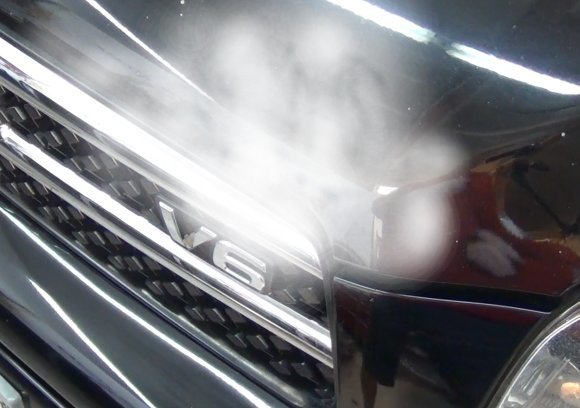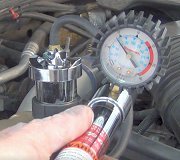The job requires mostly getting things out of the way. Drain the coolant down below the deck of the block. Off the top of my head take off the: the whole air intake plentum including the filter box, serpentine belt, engine fan, upper radiator hose, etc. If it has air you'll have to move the compressor out of the way. Get some wire tags or duct tape to tag the sensor wires you'll have to disconnect. The engine wire harness is routed a certain way, take note of this becuse you need to move most of it out of the way, and this routing helps when reinstalling. You must remove the distributer. Now pay attention, before you remove the distributer, take the spark plugs out and bring no. 1 cylinder up to TDC on the compression stroke. Take the distributer cap off look, there is a 6 or an arrow stamped on the plastic deck of the distributer. The rotor should be pointing at this mark. If it's not you are on the wrong end of the stroke. Make your own mark to reference the rotor to the cap deck and make a mark to reference the dist. Base to the lower intake where it bolts down. A sharpie works for this. Then you can take the dist. Out. Remove the fuel lines that go into the injectors very carefully because there are o-rings inside the injector fuel bowl.
The goal with stripping every thing off is to make it as easy as possible to take the lower intake manifold off but keep in mind that you must put it back on without scraping the gaskets and such.
The intake has an upper and lower half. The upper is plastic. It is bolted to the lower half which is aluminium. You do not have to take the upper half off to remove the lower intake manifold. The lower manifold is held on with 8 bolts, 4 on each side. Follow the removal proceedure in the manual, this is very important so you don't warp the manifold. The fel-pro kit has every thing you need gasket wise to do the job. It also contains the upper manifold gaskets as well. It's up to you whether or not you want to change these gaskets too. If you do, remove it after you take the lower manifold off the car, and it is VERY VERY IMPORTANT that you remove the 10mm nuts or studs in the reverse sequence of the torque sequence. The nuts or studs have the sequence number stamped right next to the stud. There is around 12 or so studs holding the upper manifold on and remember it is plastic, so it's fragile and very easily warped so be carefull.
I use gray silicone to seal the front and back of the manofold instead of the stuff you get with the kit. It seems to work better because it's designed for sealing under torque loads. Put thin coat of silicone around the water passages on the heads, this seals that area better. Oh yea, check the distributer gear for any wear. I've seen them wear out. Also when you put the distributer back in--you should take the car to someone with a scan tool that could check and adjust the cam timing. This cannot be done with a timing light because the computer automaticly sets the advance. It's very hard to set the distributer back in exactly where it needs to be and believe me the cam timing is extremely sensitive. It just takes a few hundreths of an inch to be way off. Be sure not to start up the engine right away when you are done, you must allow time for the silicone to dry. I let it sit over-night to be sure. Let me know how you make out. Be patient and clean. Remember you are going to expose the bearings and crank to the outside world TAKE PRECAUTIONS FOR THIS. And no matter how tempting it is, DO NOT touch or scrape any of the hard sludge build up you will see in the oil gallery of the block. If you do you mine-as-well pull the engine and rebuild the lower half of the engine. It will fall into the bearings and destroy everything ( I learned this one the hard way)
Well AJ, good luck and BTW I used to work on World Of Outlaw Sprint Race Cars.
Monday, November 26th, 2007 AT 2:22 AM


